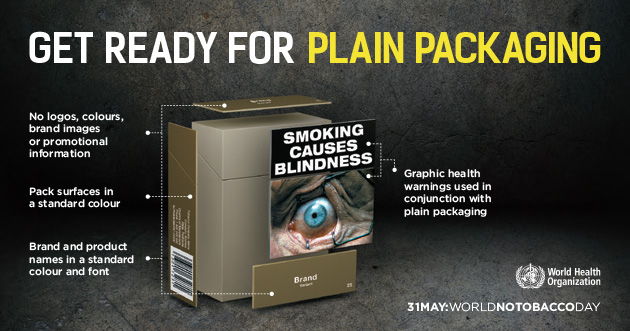
On World No Tobacco Day on Tuesday, India hinted at adopting the World Health Organization's resolution of plain packaging for tobacco/cigarette products. The union health ministry in a tweet on Tuesday endorsed the WHO's move of plain packaging.
Earlier, WHO in a statement said that plain packaging is an important measure to reduce the consumption of tobacco, which kills nearly 6 million people worldwide every year.
"It reduces the attractiveness of tobacco products, restricts use of tobacco packaging as a form of advertising, limits misleading packaging and labelling and increases the effectiveness of health warnings," WHO said in an official statement.
For this year's No Tobacco Day, WHO called upon all the countries to adopt plain (standardised) packaging for tobacco products.
Plain packaging refers to measures to restrict or prohibit the use of logos, colours, brand images or promotional information on packaging other than brand names displayed in a standard colour and font.
India has already adopted strict health warnings size rule by increasing the size of warnings from 40 percent to 85 percent.
The tobacco industry, meanwhile, is up in arms against the government decision and has said that the decision would impact the livelihood of 45.7 million people.
The Tobacco Institute of India (TII), representative body of the industry stakeholders, said in a statement that if the Indian government adopts the WHO resolution of plain tobacco packaging, it would spell disaster for the sector.
"Any proposal to implement plain packaging in India on the back of the extreme 85% pictorial warnings will be a further assault on the intellectual property rights of legal manufacturers and promote the cause of smuggled foreign brands," Tobacco Institute of India (TII), which represents manufacturers and farmers, said in a statement, the Economic Times reported.
India is the world's second largest tobacco producer with an estimated annual production of 800 million kgs, according to TII.
According to WHO, 5 million of the total deaths are the result of direct tobacco use, while more than 600,000 deaths worldwide every year are due to non-smokers being exposed to second-hand smoke.
Eighty percent of the more than 1 billion smokers worldwide live in low- and middle-income countries, where the burden of tobacco-related illness and death is heaviest.





!['Had denied Housefull franchise as they wanted me to wear a bikini': Tia Bajpai on turning down bold scripts [Exclusive]](https://data1.ibtimes.co.in/en/full/806605/had-denied-housefull-franchise-they-wanted-me-wear-bikini-tia-bajpai-turning-down-bold.png?w=220&h=138)



